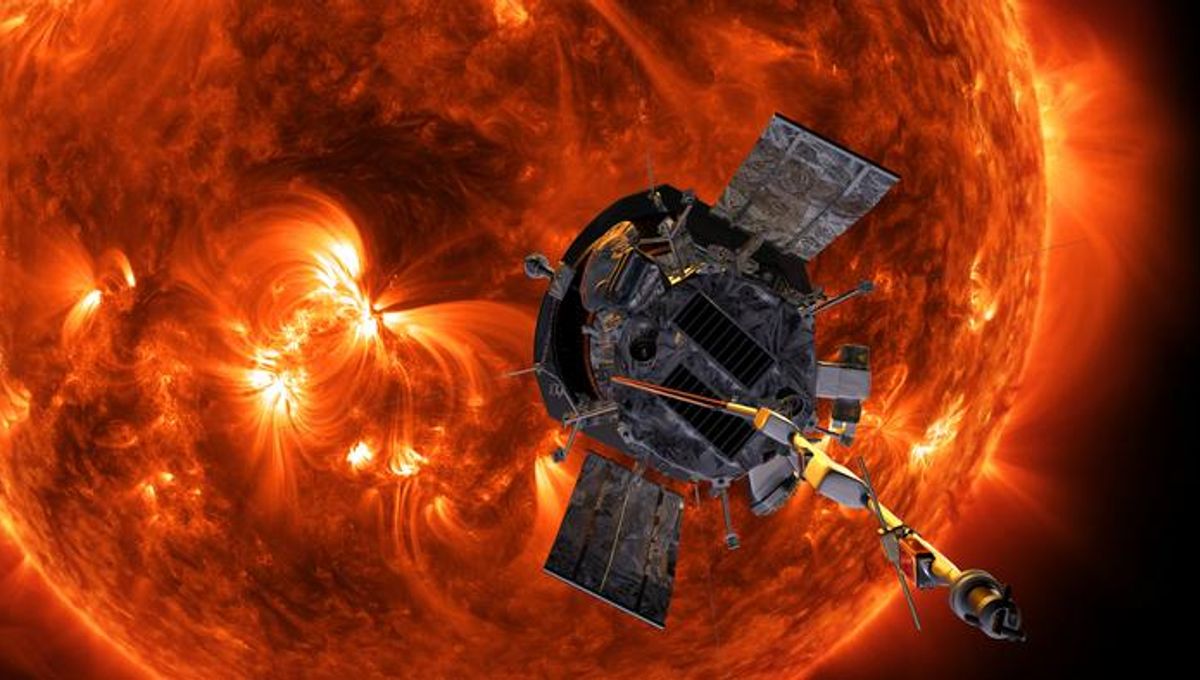
By venturing closer to the Sun than any spacecraft before it, the Parker Solar Probe has identified the regions responsible for streams of highly energetic particles traveling orders of magnitude faster than the rest of the solar wind. The finding may improve our predictions of solar activity, allowing operators to shut down endangered grids and satellites to take evasive action.
The Sun is not just a seething ball of plasma. It’s also magnetically charged, and twisting magnetic field lines constantly change its behavior near the surface, particularly now as the solar cycle rises.
One of the consequences of all this activity is patches of fast solar wind, whose particles race out of coronal holes at speeds of around 750 kilometers per second (1,700,000 miles per hour), around double the ordinary solar wind. A new study reports Parker has got close enough to observe the microstructure within these holes, revealing the forces responsible.
“Winds carry lots of information from the sun to Earth, so understanding the mechanism behind the sun’s wind is important for practical reasons on Earth,” said Dr James Drake of the University of Maryland-College Park in a statement.
The fast winds come rushing out of coronal holes, gaps in the Sun’s atmosphere where magnetic fields point outwards from the Sun that can be 30,000 kilometers (18,000 miles) wide. Within these holes are convection cells, like those seen in a boiling pot of water. At certain points these cells meet and drag the Sun’s magnetic field down from the surface creating a funnel.
The funnels intensify the magnetic field to such an extent that high energy particles are expelled with 10-100 times the energy of the slow solar wind. Parker has allowed us to resolve these funnels in a way we haven’t from Earth.
The fast wind initially streams away from the cells in isolated jets, but turbulence mixes it with the slower surrounding winds long before it reaches Earth, making its structure hard to determine.
Before Parker was launched there were two theories about the source of these high-energy particles. According to one the particles were accelerated by the reconnection of magnetic fields; the other attributed their speed to Alfvén waves of hot plasma. The probe was launched in part to settle this question, and the paper’s authors think that’s now been done.
“Our results, we think, are strong evidence that it’s reconnection that’s doing that,” said Professor Stuart Bale of the University of California, Berkeley.
The Alfvén waves are real, but the authors conclude they are a consequence of the magnetic reconnections rather than a competing driver of fast particles. Bale noted a similar process is seen in the Earth’s magnetotail, the part of the magnetosphere opposite the Sun.
Although Earth-based telescopes haven’t been able to resolve the magnetic funnels, they have detected jetlets within the holes that the authors think correspond to funnel locations.
Coronal holes exist throughout the Sun’s cycle, but during minima they retreat to the poles, pointing the fast solar winds away from the Earth. As the solar cycle builds, their locations expand.
The observations were made by Parker at just 8.3 million kilometers (5.2 million miles) from the Sun (12 solar radii). It’s mission will eventually take it to a distance of 6.4 million kilometers (almost 4 million miles), which is as close as NASA thinks it can get without destroying its instruments. The closest approach looks set to coincide with the coming solar maximum, when the Sun may be so active everything will be too chaotic to observe the causes. Then again, if Parker can, the knowledge reward will be spectacular.
“There was some consternation at the beginning of the solar probe mission that we’re going to launch this thing right into the quietest, most dull part of the solar cycle,” Bale said. “But I think without that, we would never have understood this. It would have been just too messy. I think we’re lucky that we launched it in the solar minimum.”
The study is published in Nature.
Source Link: Parker Solar Probe Finds The Source Of Fast Solar Wind Flurries